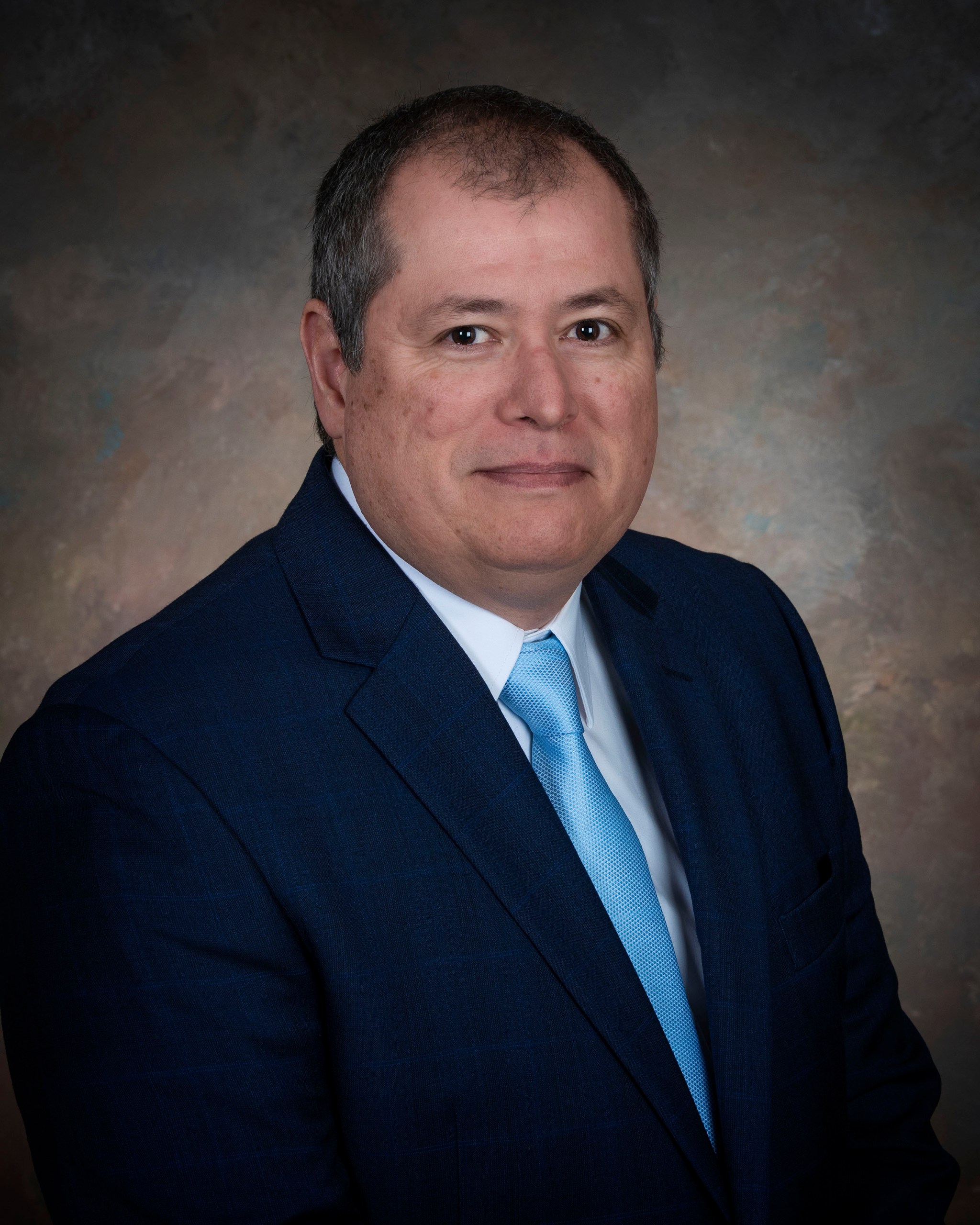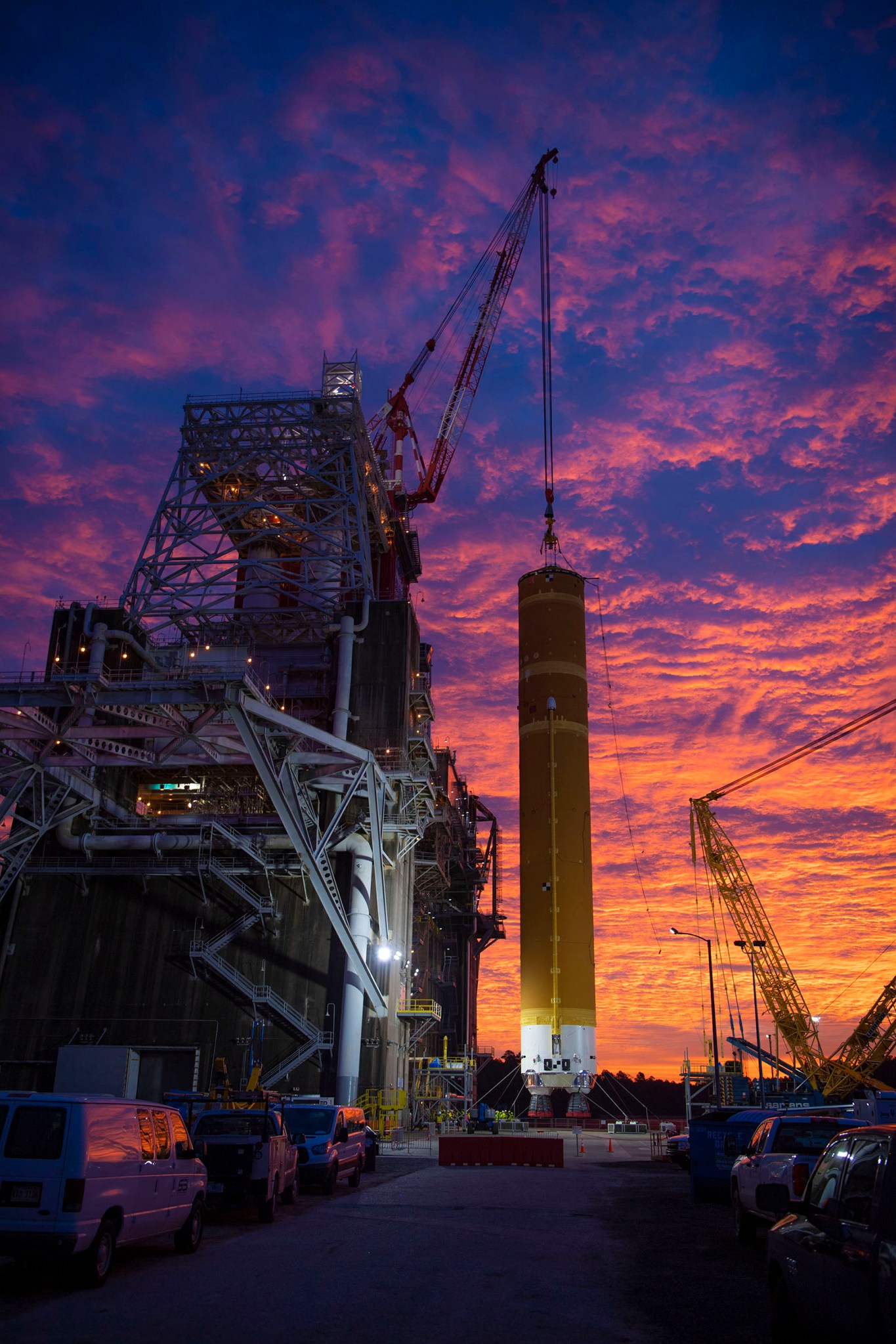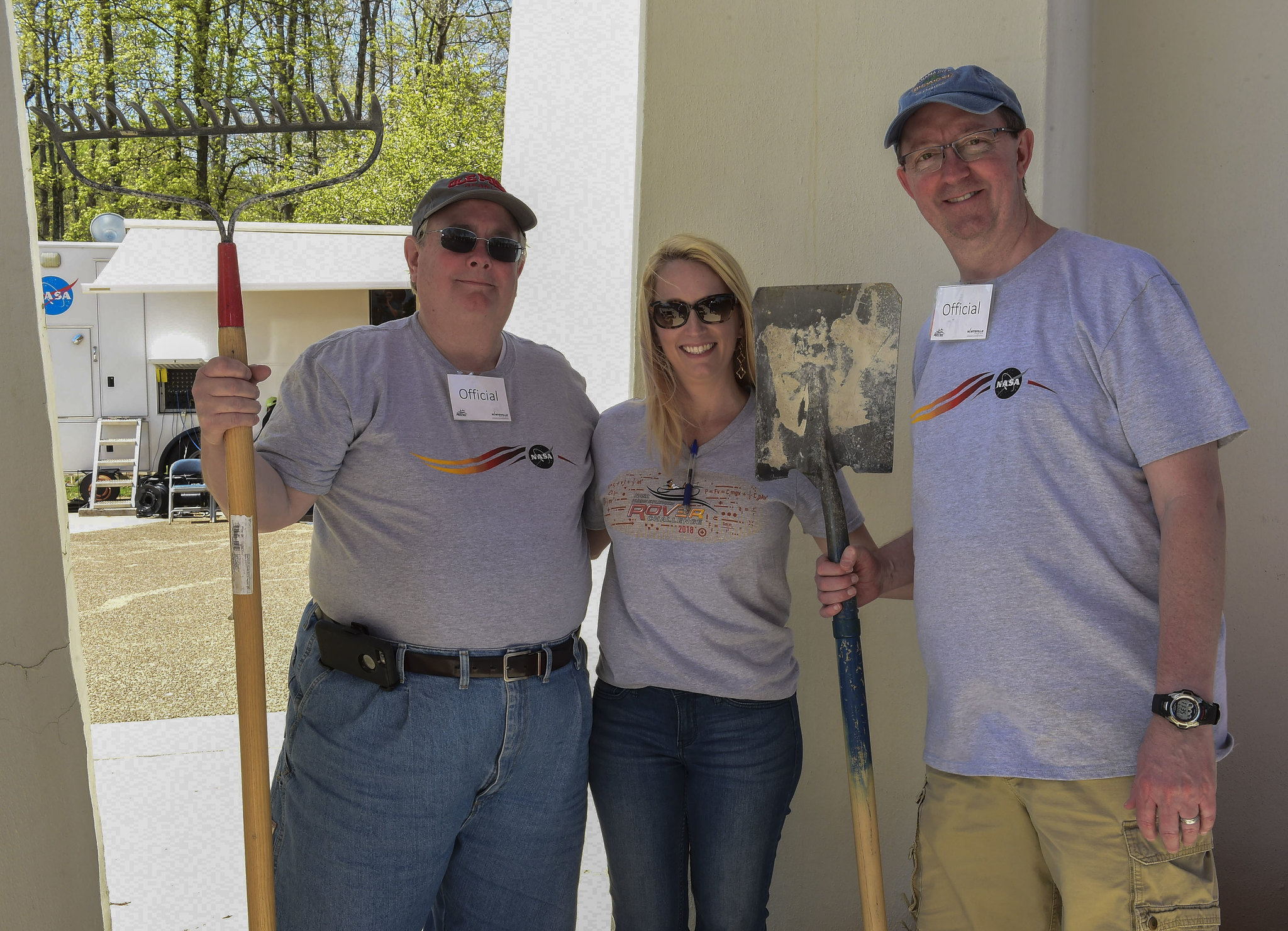In This Week’s Star
- Rene Ortega Named Human Landing System Program Chief Engineer
- SLS Core Stage Installed in Stennis Test Stand for Green Run
- Marshall, NASA to Honor Fallen Heroes with Day of Remembrance Events
- Astronauts Complete 3 Spacewalks in 15 Days to Repair International Space Station
- Volunteers Needed for NASA’s Human Exploration Rover Challenge
- Michael Goodman Receives Lifetime Achievement Award
- Greg Chavers Recognized as NASA ‘HEO HErO’
- NASA’s Cube Quest Challenge Crowdsources Ideas for Deep Space CubeSats
- OSIRIS-REx Breaks Record, Highlighted on ‘This Week @NASA’
- This Week in NASA History: First Launch of Saturn I, Block II (SA-5) – Jan. 29, 1964
Rene Ortega Named Human Landing System Program Chief Engineer
Rene Ortega has been named chief engineer of the Human Landing System Program at NASA’s Marshall Space Flight Center. This appointment follows Ortega’s most recent roles as acting chief engineer of the Human Landing System and chief engineer of the Marshall Habitation Systems Development Office. In those positions, he provided senior management and leadership expertise for the early development of requirements and processes associated with the Human Landing System and Habitation Systems.
Ortega has nearly 33 years of NASA experience with design, analysis, development, manufacturing, qualification and flight of space rockets, propulsion systems and habitation systems. He has previously served as the chief engineer for the Space Launch System Exploration Upper Stage, SLS Spacecraft and Payload Integration Element, Human Exploration Development Office in the Flight Programs and Partnerships Office and Shuttle Propulsion Systems Engineering and Integration Office.
Ortega has led numerous technical issue resolutions with interface and support from Marshall’s Space Systems Department, Spacecraft and Vehicle Systems Department, Propulsion Systems Department, Materials & Processes Laboratory and Test Laboratory.
A native of Managua, Nicaragua, Ortega graduated from the University of Miami in Florida with dual bachelor’s degrees in civil engineering and architectural engineering. He also holds a master’s degree in mechanical engineering from the University of Alabama in Huntsville.
Ortega has received numerous NASA awards, including the Exceptional Achievement Medal, Exceptional Service Medal, NASA Engineering and Safety Center Director’s Award, Marshall Center Director Commendations and the Silver Snoopy award.
SLS Core Stage Installed in Stennis Test Stand for Green Run
All eyes are on south Mississippi with this month’s delivery and installation of NASA’s Space Launch System rocket’s first core stage to the agency’s Stennis Space Center. The core stage was lifted and installation completed into the B-2 Test Stand on Jan. 22.
The SLS rocket stage will undergo the core stage Green Run test series in the stand prior to its Artemis I flight. The Green Run testing will be the first top-to-bottom integrated testing of the stage’s systems prior to its maiden flight. Green Run testing will take place over several months and culminate with an eight-minute, full-duration hot fire of the stage’s four RS-25 engines to generate 2 million pounds of thrust, as during an actual launch.
“This critical test series will demonstrate the rocket’s core stage propulsion system is ready for launch on missions to deep space,” Stennis Director Rick Gilbrech said. “The countdown to this nation’s next great era of space exploration is moving ahead.”
The SLS core stage is the largest rocket stage ever built by NASA and stands 212 feet tall and measures 27.6 feet in diameter. It is equipped with state-of-the-art avionics, miles of cables, propulsion systems and propellant tanks that hold a total of 733,000 gallons of liquid oxygen and liquid hydrogen to fuel the four RS-25 engines during launch. The core stage was designed by NASA and Boeing at NASA’s Marshall Space Flight Center, then manufactured at NASA’s Michoud Assembly Facility by lead contractor Boeing, with input and contributions from more than 1,100 large and small businesses in 44 states.
“Delivering the Space Launch System rocket core stage to Stennis for testing is an epic historical milestone,” said Julie Bassler, SLS stages manager. “My team looks forward to bringing this flight hardware to life and conducting this vital test that will demonstrate the ability to provide 2 million pounds of thrust to send the Artemis I mission to space.”
NASA completed extensive modifications to prepare the B-2 stand for the test series. The stand has a notable history, having been used to test Saturn V stages that helped launch astronauts to the Moon as part of the Apollo Program and the three-engine propulsion system of the space shuttle prior to its first flight.
Marshall, NASA to Honor Fallen Heroes with Day of Remembrance Events
NASA’s Marshall Space Flight Center will join the NASA family nationwide Jan. 30 to honor the brave explorers — including the crews of Apollo 1 and space shuttles Challenger and Columbia — who lost their lives in the pursuit of scientific discovery and the betterment of all humankind.
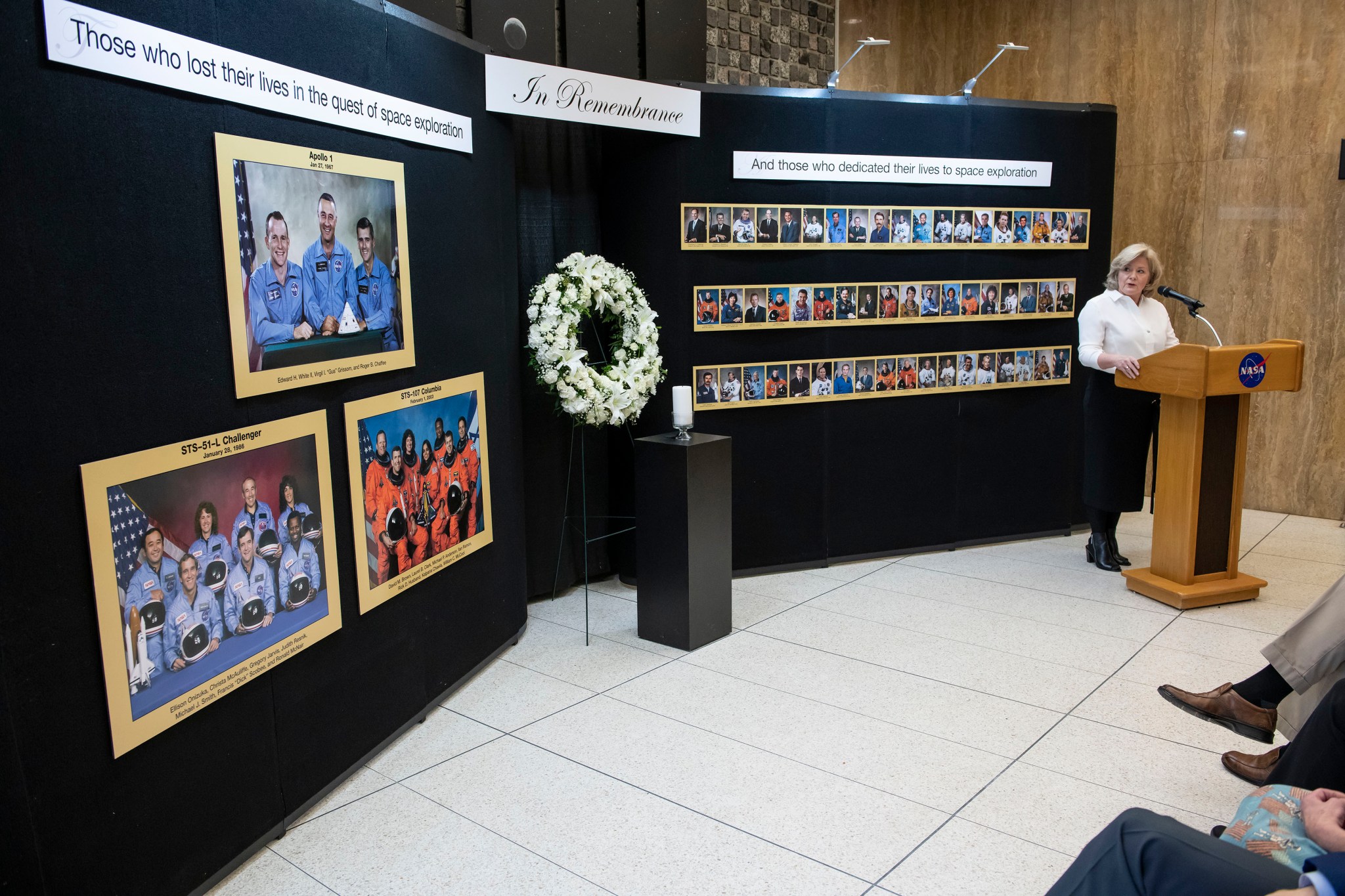
Team members are invited to take part in a candle-lighting ceremony at 9 a.m. in the lobby of Building 4200. Speakers will include Marshall Associate Director Steve Miley and former NASA astronaut Jan Davis, now a program manager at Bastion Technologies of Huntsville. Johnny Stephenson, director of Marshall’s Office of Strategic Analysis & Communications, will introduce speakers and lead a moment of silence.
Following the ceremony, team members will have an opportunity to view “An Article of Hope” at 9:45 a.m. in Morris Auditorium. The documentary chronicles portions of the Columbia crews’ lives, particularly the acquiring of the miniature Tora — the article of hope — that Israeli astronaut Ilan Ramon took into space with him and its remarkable history.
NASA Administrator Jim Bridenstine, along with other senior agency officials, will lead an observance at Arlington National Cemetery in Virginia starting at noon Central time. The agency also will pay tribute to its fallen astronauts with special online content.
Astronauts Complete 3 Spacewalks in 15 Days to Repair International Space Station
By Will Bryan
Every house and workplace needs maintenance sometimes. When you’re an astronaut on the International Space Station — orbiting 200 miles above Earth at a cool 17,500 miles per hour — there isn’t the option to call the local electrician or plumber. You are the local electrician and plumber.
On Jan. 25, NASA astronaut Andrew Morgan and European Space Agency astronaut Luca Parmitano completed the third and final spacewalk in a series that spanned just 15 days. Their mission was to complete repairs to the Alpha Magnetic Spectrometer — a physics experiment launched in 2011 to answer fundamental questions about dark matter in the universe. The astronauts also removed degraded lens filters on two external high-definition video cameras. Morgan and Parmitano conducted three prior spacewalks in 2019 to work on AMS.
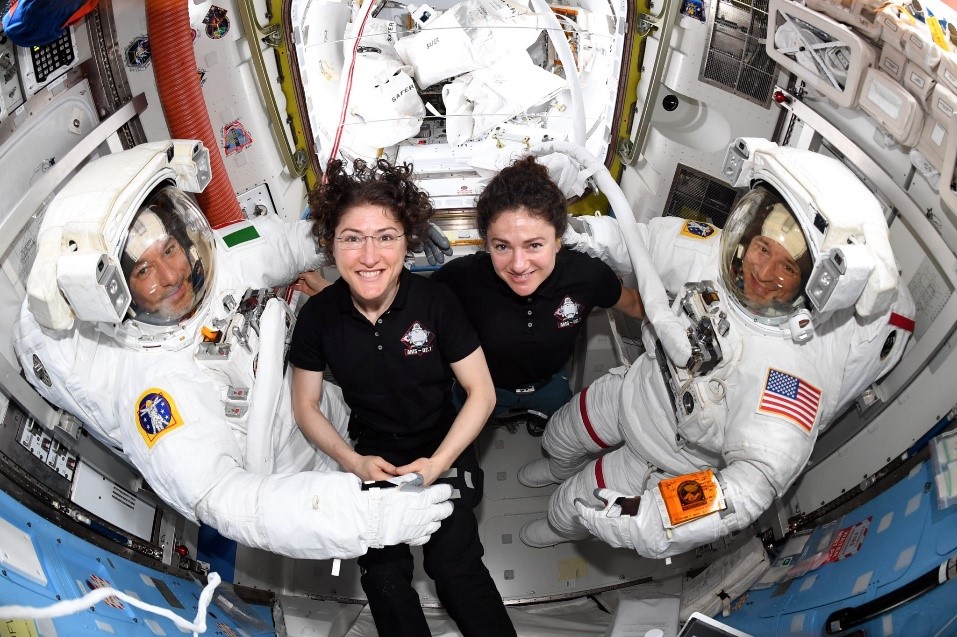
“We did it. We all did it,” Morgan said following the spacewalk. “By giving AMS a new coolant pump, we’ve given this magnificent science experiment a new life and look forward to it teaching us more about the mysteries of our universe. It’s undoubtedly going to be part of the ISS scientific legacy for years to come.”
The latest Morgan and Parmitano spacewalk came on the heels of spacewalks by NASA astronauts Jessica Meir and Christina Koch on Jan. 15 and Jan. 20. Those spacewalks removed and repaired batteries that store and distribute power collected from the solar arrays on the space station’s Port-6 truss structure. The upgraded batteries provide improved performance and better efficiency for space station operations.
Astronauts have now completed 227 spacewalks on the space station during its 20-year history. The Expedition 61 crew completed nine of those spacewalks – the most of any crew increment in space station history – totaling 61 hours.
The astronauts and ground teams now turn their attention to dozens of ongoing experiments and the upcoming departure and landing of Expedition 61 crew members Koch, Parmitano and Russian cosmonaut Alexander Skvortsov on Feb. 6. Upon landing, Koch will have lived in space continuously for 328 days, second only to retired NASA astronaut Scott Kelly, who spent 340 days on orbit in 2015-2016.
NASA’s Payload Operations Integration Center at NASA’s Marshall Space Flight Center coordinates all U.S., European, Japanese and Canadian scientific and commercial experiments and serves at science mission control for the space station.
Stay up to date with space station activities by following the Space Station blog.
Bryan, an ASRC Federal/Analytical Services employee, supports the Office of Strategic Analysis & Communications.
Volunteers Needed for NASA’s Human Exploration Rover Challenge
By Will Bryan
Volunteers are needed for the 2020 edition of NASA’s Human Exploration Rover Challenge, to be held April 17-18 at the U.S. Space & Rocket Center. Volunteer areas include administrative help, obstacle and task scoring and maintenance, traffic control and more.
Those interested in supporting the event should visit the NASA Human Exploration Rover Challenge volunteer registration website. Please note that the website is behind the NASA firewall. If you are unable to access it, please email volunteer coordinator Amy McDowell. The annual volunteer meeting will be held April 15 from 3-4 p.m. in the U.S. Space & Rocket Center’s National Geographic Theater.
The 26th annual engineering competition challenges high school and college students from around the United States and world to design, build and navigate a human-powered rover through a grueling half-mile course with 14 obstacles reminiscent of terrain on the Moon, Mars and other planetary bodies. The course also contains five scientific tasks that mimic those that astronauts will have to complete when exploring the Moon and Mars. Teams make real-time decisions about which mission objectives to attempt and which to bypass — all driven by a limited, virtual eight-minute supply of oxygen. Teams earn points as they progress through the competition.
Visit here to learn more about the Marshall-hosted Artemis Student Challenge. NASA’s Artemis Student Challenges engage and foster the next generation of scientists, engineers, explorers and spaceflight professionals through scientific and engineering competitions.
Bryan, an ASRC Federal/Analytical Services employee, supports the Office of Strategic Analysis & Communications.
Michael Goodman Receives Lifetime Achievement Award
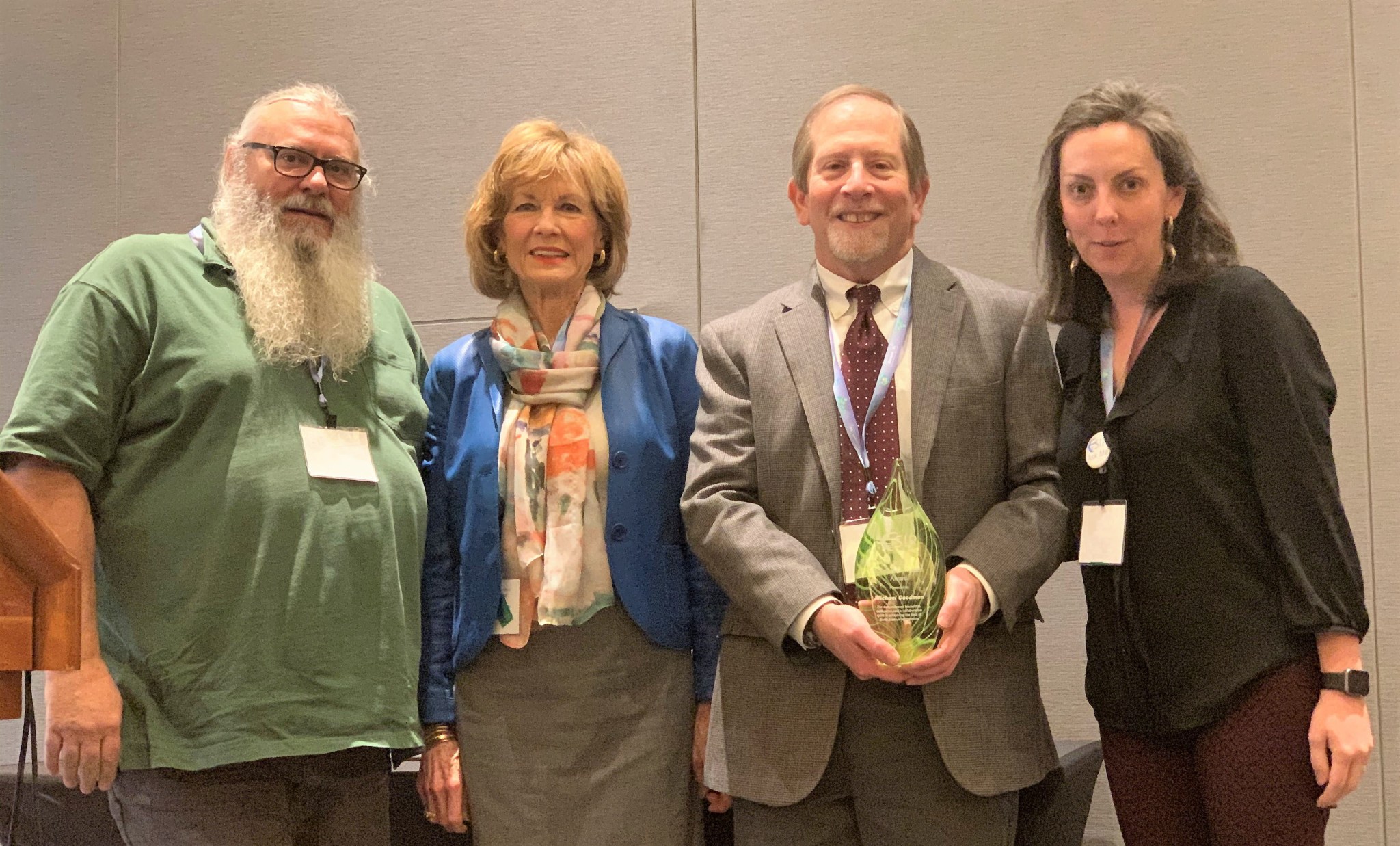
Michael Goodman, center right, deputy manager of the Science Research and Projects Division at NASA’s Marshall Space Flight Center, receives the Martha Maiden Award at the 2020 Earth Science Information Partners Winter Meeting on Jan. 9 in Bethesda, Maryland. This lifetime achievement award honors individuals who have demonstrated leadership, dedication and a collaborative spirit in advancing the field of Earth science information. Goodman is joined by members of ESIP’s nominating committee, from left, Mike Daniels, National Center for Atmospheric Research; Sara Graves, University of Alabama in Huntsville; and Erin Robinson, ESIP executive director. (ESIP)
Greg Chavers Recognized as NASA ‘HEO HErO’
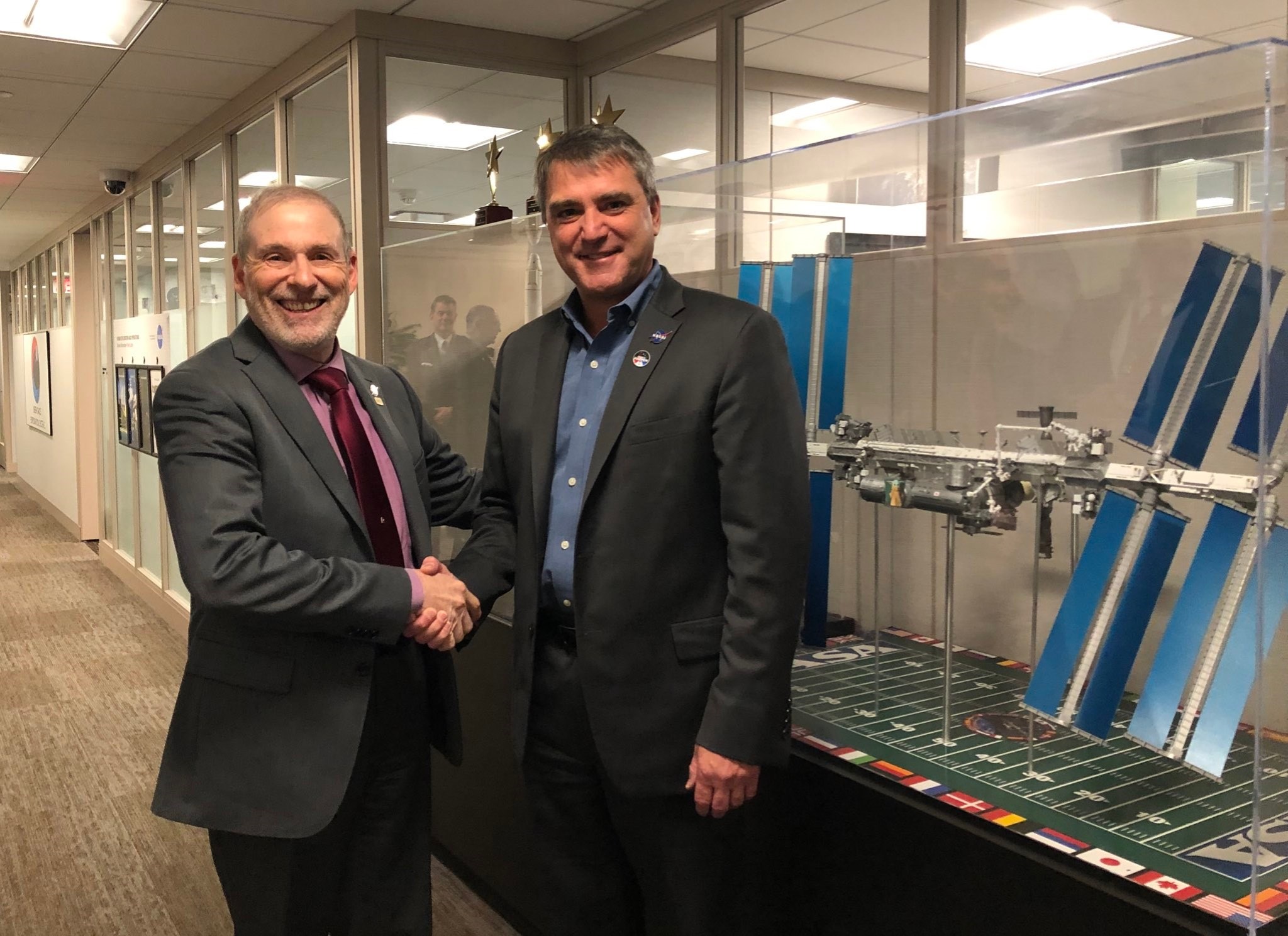
Douglas Loverro, NASA associate administrator for the Human Exploration and Operations Mission Directorate, left, honors Greg Chavers, deputy manager of NASA’s Human Landing System Program, as a “HEO HErO.” Loverro recognized Chavers in a Jan. 16 tweet, noting that “[o]ur journey to the Moon will happen because of dedicated folks like Greg Chavers of Marshall Space Flight Center.” HEO HErOes from across the agency are shared daily on @DouglasLoverro, Loverro’s Twitter account. (NASA)
NASA’s Cube Quest Challenge Crowdsources Ideas for Deep Space CubeSats
Explore more about NASA’s Cube Quest Centennial Challenge: https://www.nasa.gov/cubequest Credits: NASA
Pushing the boundaries of space technology, NASA’s first in-space competition invites the public to design, build and launch small satellites capable of advanced operations near and beyond the Moon. Three winners from the ground competition, completed in 2017, are readying their CubeSats for launch on Artemis I, the first uncrewed flight of NASA’s Space Launch System rocket and the Orion spacecraft. Additional teams can compete in the Deep Space Derby and Lunar Derby by securing their own launch opportunity. Explore more about NASA’s Cube Quest Centennial Challenge here. The Centennial Challenges Program is managed by NASA’s Marshall Space Flight Center.
OSIRIS-REx Breaks Record, Highlighted on ‘This Week @NASA’
NASA’s OSIRIS-REx mission is featured in “This Week @NASA,” a weekly video program broadcast on NASA-TV and posted online.
The OSIRIS-REx spacecraft completed the closest science observations to date of a sample site during a flyover only four-tenths of a mile above Nightingale — the mission’s primary sample site on asteroid Bennu. High-resolution images collected during the flyover will help the spacecraft avoid hazards during sample collection later this year.
OSIRIS-REx is a project of the Science Mission Directorate’s New Horizons Program, managed by NASA’s Marshall Space Flight Center.
View this and previous episodes at “This Week @NASA” on NASA’s YouTube page.
This Week in NASA History: First Launch of Saturn I, Block II (SA-5) – Jan. 29, 1964
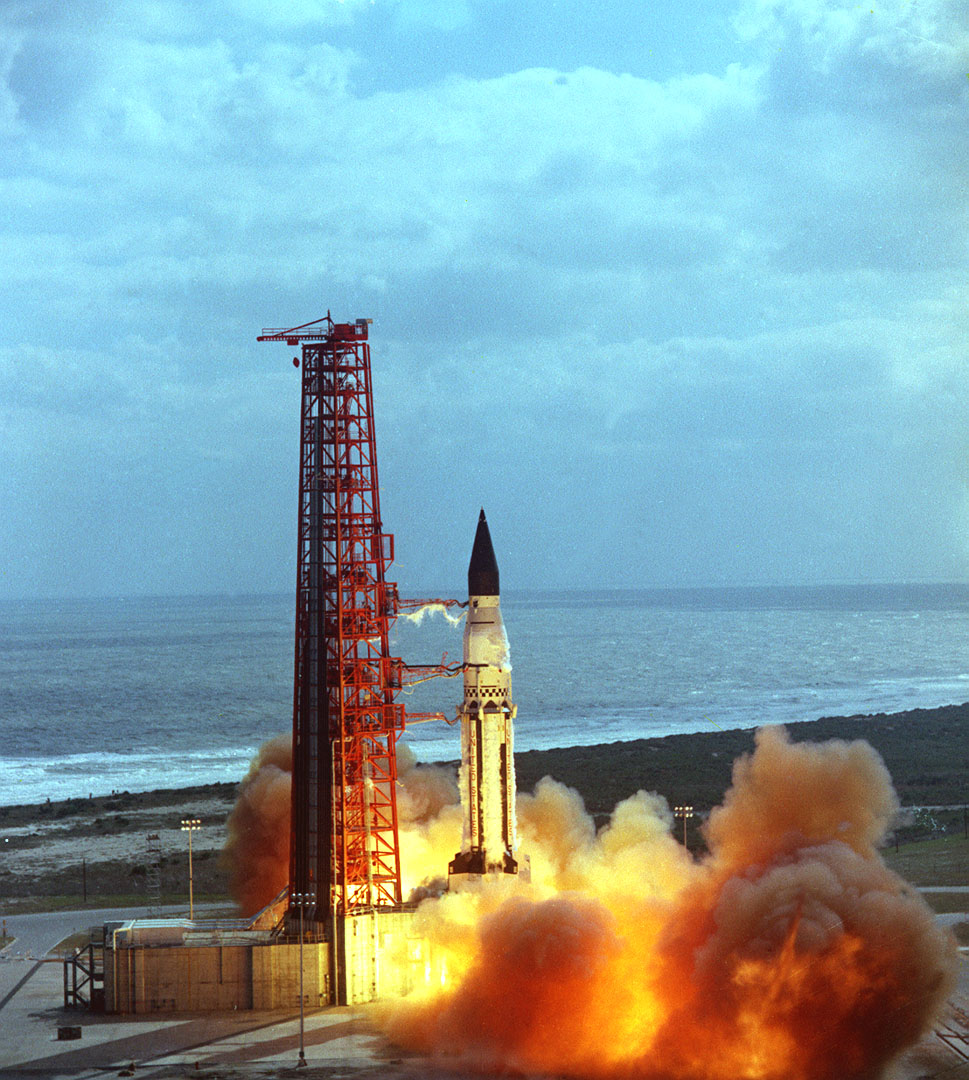
This week in 1964, NASA launched the first Saturn I, Block II — designated SA-5 — from NASA’s Kennedy Space Center. The fifth Saturn I launch, SA-5 marked several firsts for the Saturn development program, including the first flight of a live second, or S-IV, stage with a cluster of six liquid hydrogen-fueled RL-10 engines, the first successful second stage separation and the first use of Launch Complex 37. More than 11,000 measurements were taken. The Saturn I rocket was built at the Fabrication and Assembly Engineering Division at NASA’s Marshall Space Flight Center. Today, Marshall is playing a vital role in the Artemis program by developing the SLS, the backbone of NASA’s exploration plans and the only rocket capable of sending humans to the Moon and Mars. The NASA History Program is responsible for generating, disseminating and preserving NASA’s remarkable history and providing a comprehensive understanding of the institutional, cultural, social, political, economic, technological and scientific aspects of NASA’s activities in aeronautics and space. For more pictures like this one and to connect to NASA’s history, visit the Marshall History Program’s webpage. (NASA)



























